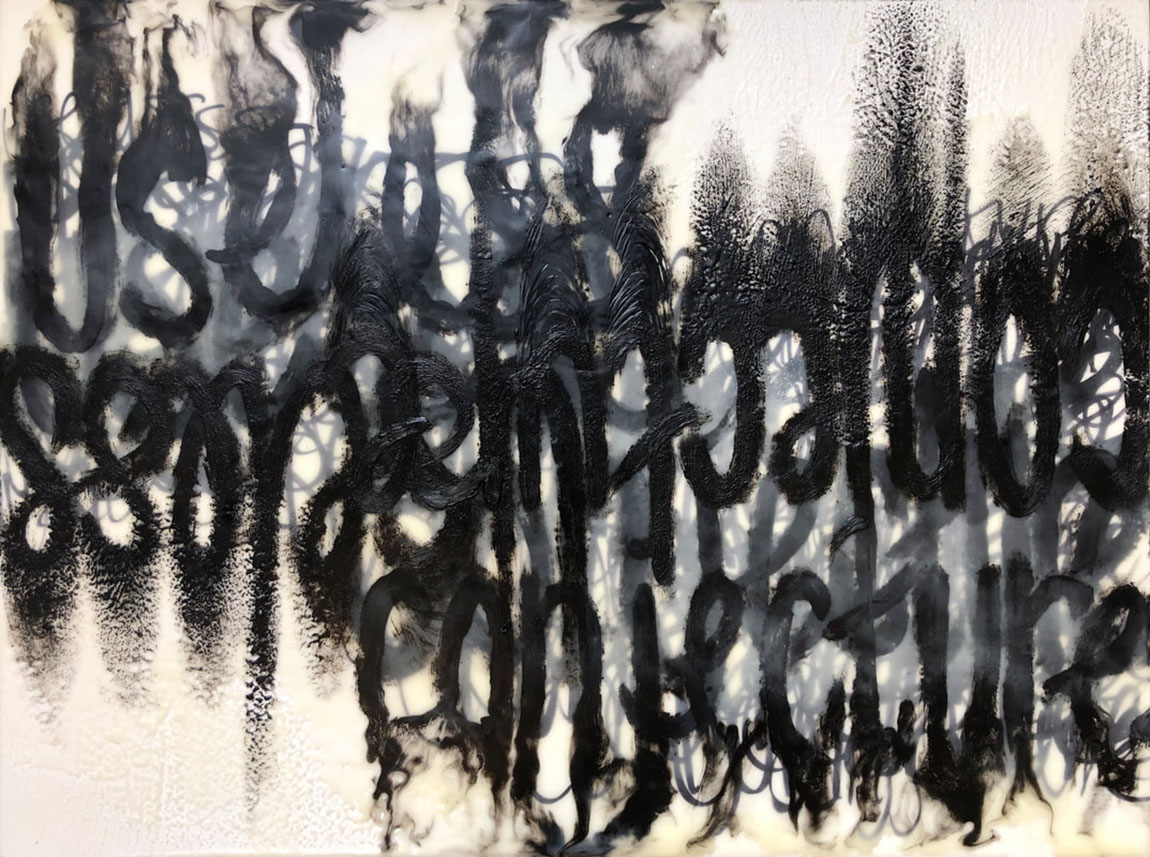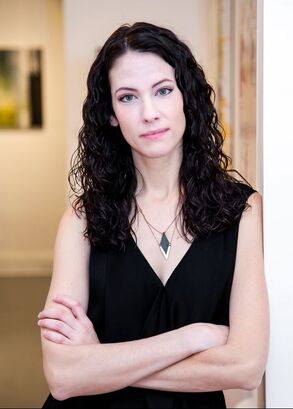Artful Words
Dawn Kramlich ’09 is a text-based artist who also teaches at Muhlenberg.Monday, April 11, 2022 03:40 PM
 “Language of the Oppressor” by Dawn Kramlich ’09
“Language of the Oppressor” by Dawn Kramlich ’09 Dawn Kramlich ’09 studied both art and English at Muhlenberg. Now, she is an artist who uses text as the basis for her sculptures, installations and 2D works. At Muhlenberg, she completed the first cross-major creative honors thesis in the history of the departments (painting/poem pairs plus a written thesis). She went on to earn a Master of Fine Arts from Philadelphia’s Moore College of Art & Design, and she now teaches at Muhlenberg and Penn State University’s Abington College. Last year, her work was part of Capitolism: The Normalization of Political Violence in the United States, an exhibition at Birmingham, Alabama’s Maus Contemporary gallery, as well as Only If We Wish To, an exhibition at New York City’s Equity Gallery.
Dawn Kramlich ’09 studied both art and English at Muhlenberg. Now, she is an artist who uses text as the basis for her sculptures, installations and 2D works. At Muhlenberg, she completed the first cross-major creative honors thesis in the history of the departments (painting/poem pairs plus a written thesis). She went on to earn a Master of Fine Arts from Philadelphia’s Moore College of Art & Design, and she now teaches at Muhlenberg and Penn State University’s Abington College. Last year, her work was part of Capitolism: The Normalization of Political Violence in the United States, an exhibition at Birmingham, Alabama’s Maus Contemporary gallery, as well as Only If We Wish To, an exhibition at New York City’s Equity Gallery.
Why do you use text in your works of art?
Dawn Kramlich ’09 I do this for many reasons, some of which include my generally being a logophile [a lover of words], my interest in ekphrasis [the use of a detailed description of a work of visual art as a literary device] and my ever-expanding fascination with the text and image relationship, especially in today’s Information Age, which is so inundated with text-and-image and text-as-image combinations thanks to the internet, social media and our surplus of screens.
How did you come to create “Language of the Oppressor,” the piece shown in the Capitolism exhibit (at top)?
DK “Language of the Oppressor” is a product of my contemplating the state of America in 2020. Within my work, I often use phrases that were spoken to me, and the one I chose to use in this piece—“useless conjecture”—is indicative of those who uphold the enduring racist, heteronormative, patriarchal, sexist systems that prevent our country’s progress. This piece was my response to the flippant neglect of those in power who live in denial that white supremacy has long existed and is homegrown terrorism.
What’s the story behind “American Palimpsest 2: Imposition Paradox,” the piece that was part of the Only If We Wish To exhibit?
DK This piece incorporates the phrase “you are too sensitive.” What I find most interesting about my experiencing this phrase is that when those who voice it do so, it tends to be when they are experiencing but avoiding intense emotions. This imposition of projection was the inspiration behind the piece, which navigates the phrase as simultaneously confined, confining, concrete and a smoke screen.
